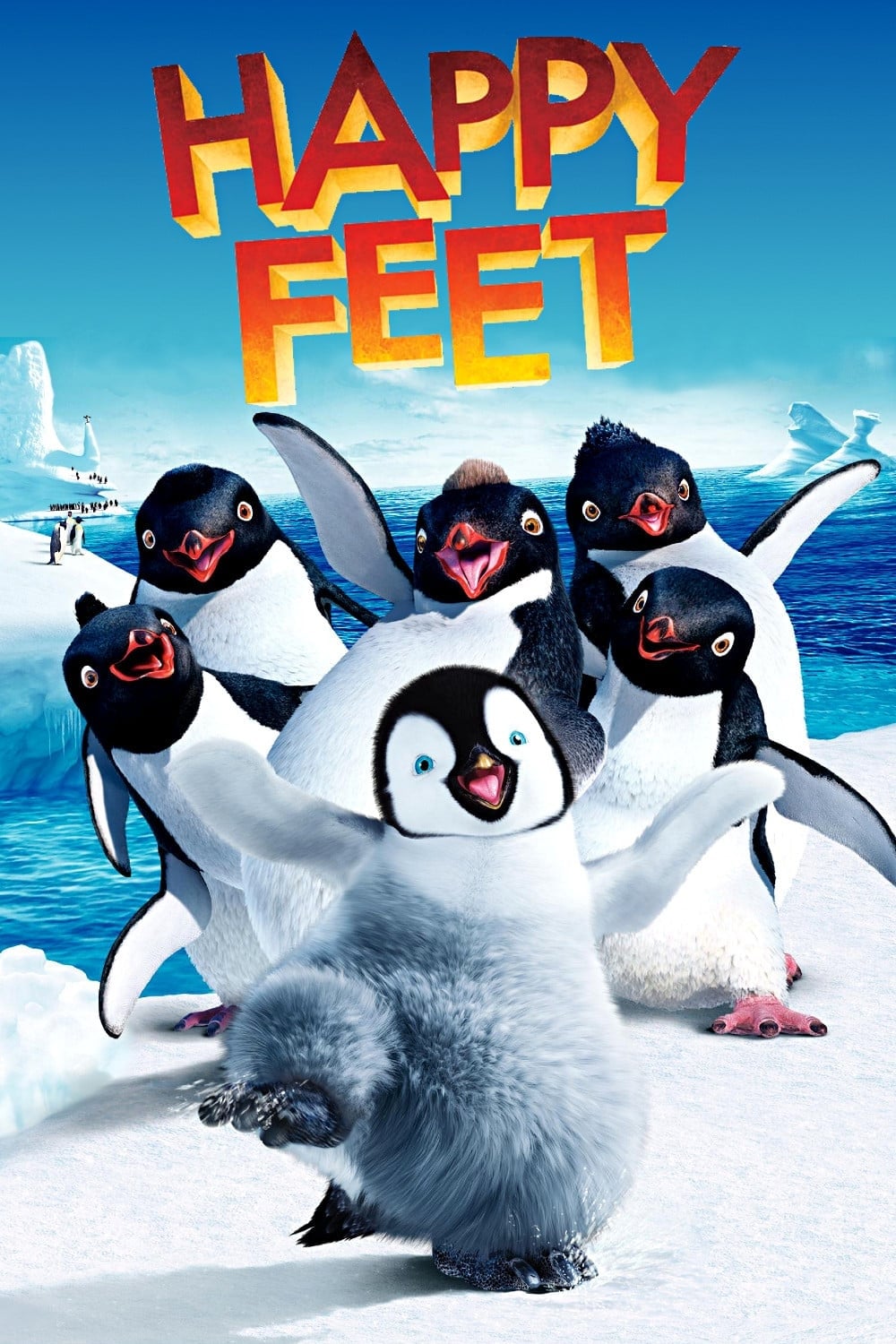
Into the world of the Emperor Penguins, who find their soul mates through song, a penguin is born who cannot sing. But he can tap dance something fierce!
20 Nov Happy Feet (2006)
Mad Maximum Motion
You can parse this into three bits I think.
The first is what people normally see, the story. Miller and many of the Oz New Wave don’t pay much attention to this. They put something there of course, otherwise we would get distracted. Here it is an amazingly clever fold, referencing another movie “Flight of the Penguins.” Now as it happens, I really disliked that movie. It was cast as a documentary, but was really an exercise in making these animals “human.” Its a bit disgusting and something of the ultimate in human-centrism. We turn these birds into performers for us.
Miller grabs this and turns it on itself. The story has penguins in crisis because of human-caused environmental damage. They are saved because we think them cute. Literally at the end, we have the makers of that earlier film arriving at the end and capturing their cute human mannerisms. Our environmentalist urges are largely just refactored racial superiority.
If we just had that one component this would be worthwhile, but he goes a step further by making these birds yet more human in the way they perform for us. Like a million Judy Garlands on speed, they get their whole identity from performance. This provides an opportunity for a narrative complication: the priests of one performance religion holding against another. Its a pretty sweet and intelligent notion.
We literally have humans as birds. We have the voices as usual. By an accident of technology, we accept this readily. The relatively new idea is the motion. Cinematic grammar is primarily about motion, presence and absence of light, motion and environment.
Miller’s cool idea has us working with novel motion in two ways.
The first is in motion of the objects. We see birds, but they move as humans. Its all human motion, both in normal and performance mode. We used to call this rotoscoping and it involved tracing a film. Now we do it with digital rigging and captured kinematics, but it is the same idea we had with Betty Boop’s dreamfolk whose movements are Cab Calloway’s. Its nice enough for us to fall into the trap Miller sets up because we like these performances.
The second is the motion of the camera. 2003’s “Finding Nemo” was a major step forward in how the camera dances. That obviously was the inspiration for this not only in the even more radical camera sweeps but how they tighten for the underwater chase scenes.
I wish he had decided to innovate instead of exploit. But still, with all this focus, on watching and dancing, its a rare treat.
Posted in 2009
Ted’s Evaluation — 3 of 3: Worth watching.


No Comments